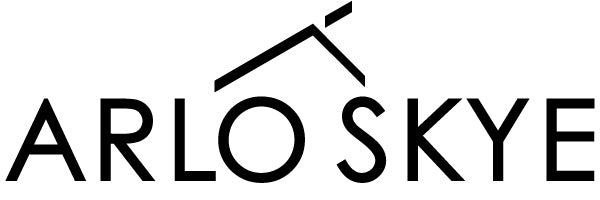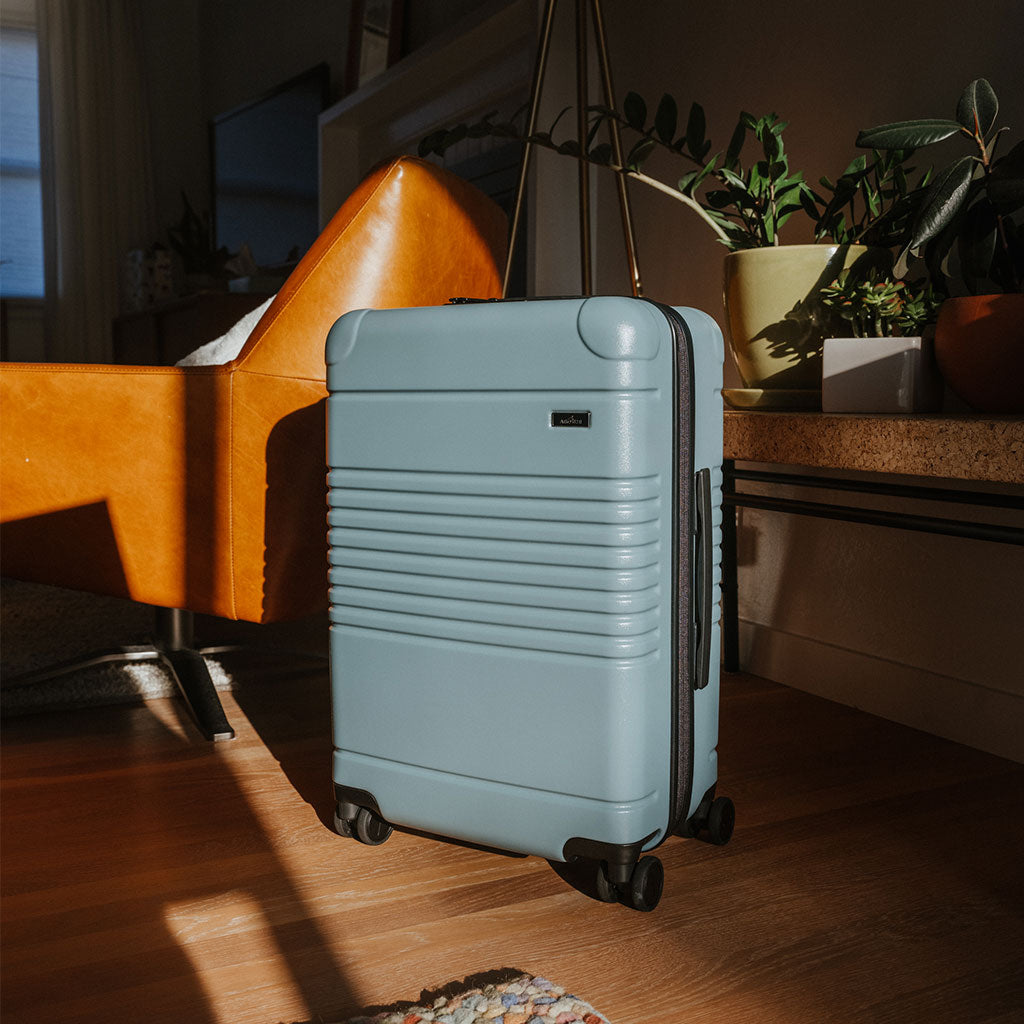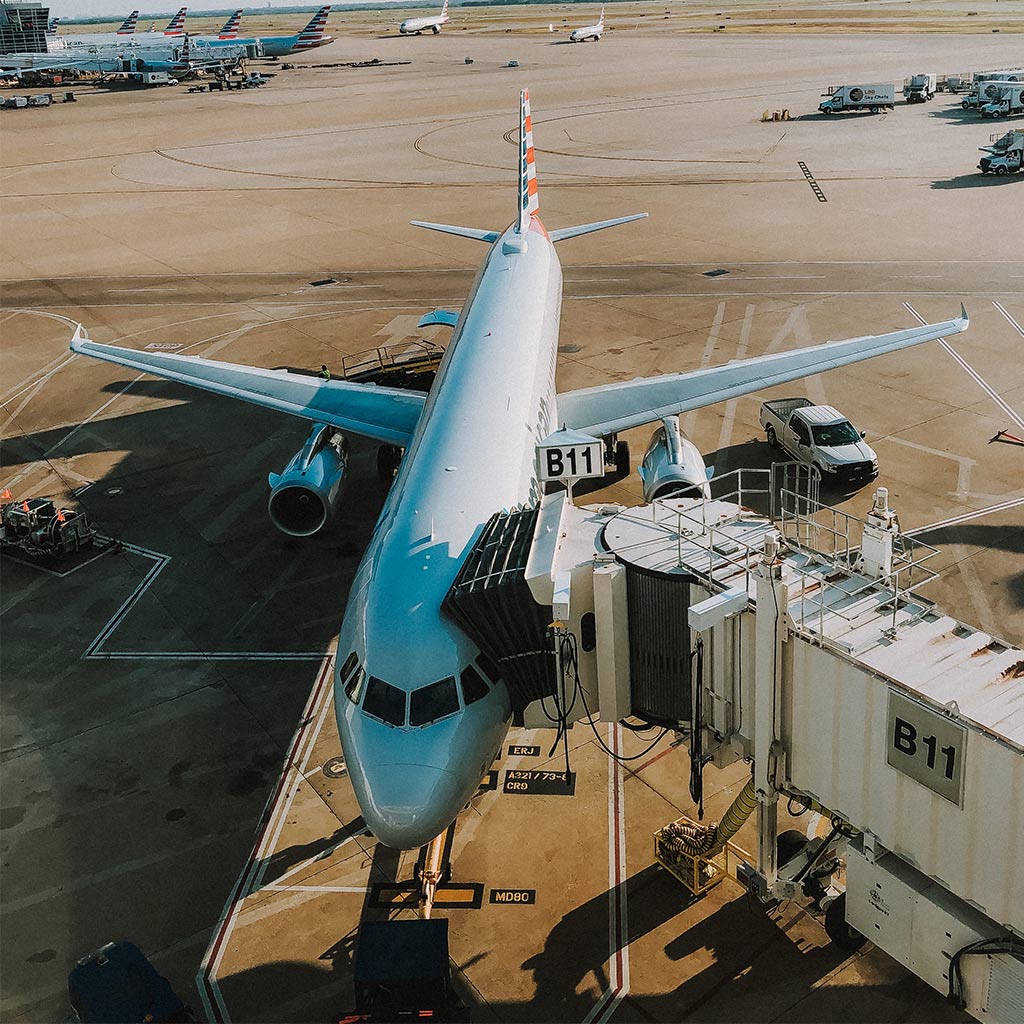Historically, the holiday season surrounding Thanksgiving and Christmas is the busiest travel period for airports throughout the country. While some of us may be choosing to stick close to home this year, if you are making the choice to fly and contemplating what that means for you and your family during the ongoing COVID health crisis, we’ve outlined some of the tips to keep in mind. From airline policies to pre-flight testing, preparations for domestic and international travel, and even what food to pack and prepare—here’s some insider advice.
Confirm State or Country Requirements & Plan Accordingly
Heading out of state or out of the country to see family members for the holidays this year? We’d strongly recommend you arrive early to allow time to safely self-quarantine for at least a few days before festivities begin. Depending on each state’s or country’s guidelines—and your tolerance for a 14-day quarantine—you might be asked to show a negative COVID test result prior to departure, take a second test upon arrival, and/or register for contact tracing. For example, travelers to New York state (excluding those arriving from New Jersey or Connecticut) are requested to quarantine for 14 days upon arrival. There is, however, an option to “test out” earlier which asks that travelers take a COVID test within 72 hours of departure. Upon arrival in New York, they would have to quarantine for three days. On the fourth day of quarantine, they would need to take a second COVID test and if both test results are negative, they can exit quarantine. Ohio has a voluntary 14-day quarantine in effect for visitors from nine states (Idaho, Nevada, Utah, South Dakota, Nebraska, Kansas, Iowa, Wisconsin, and Alabama). California, Florida, and Texas, on the other hand, do not have any quarantine requirements for out-of-state visitors. Certain states in Mexico like Quintana Roo and Baja California are also offering quarantine-free stays for tourists arriving by air (land borders are closed) as long as they pass a health screening at the airport. You can find the latest updates on US state or country-level quarantine restrictions via TripsGuard.com.
Get a Covid Test and a Flu Shot
As a general safety precaution, consider getting tested 2-3 days prior to departure—provided you can get your results in time—as well as a few days after arrival. There are two types of tests available at most public and private testing clinics: a molecular rapid test (has a small probability of being inaccurate but you get the results in ~15 minutes) or the gold-standard PCR test (100% accurate but it takes 2-6 days to get results). These tests are free at state-recommended testing facilities. Certain countries may specifically require you to have a negative PCR test taken within 72 hours of your flight. In this case, call your local testing facility in advance to see how long results are taking. If it’s longer than 72 hours, consider going to a private clinic where they can guarantee PCR results back within 48 hours.
Several airports across the country are also opening testing facilities that offer both rapid and PCR tests, as well as antibody tests. The familiar XpresSpa chain that was known for its pedicures and chair massages at 25 airports has pivoted its business model and now offers coronavirus tests under the brand name XpresCheck. The company currently has three locations: Boston (Terminal E, Arrivals), JFK (Terminal 4, Level 1), and Newark (Terminal B, Level 3) with LaGuardia opening next month. XpresCheck’s clinics charge $75 for a PCR test or $90 for both the antibody and the PCR tests without insurance. The new rapid molecular tests (developed by Abbott Laboratories) cost a hefty $200 and are not covered by insurance. Over the coming months, expect to see more airports offering such testing programs in concert with city clinics. Oakland Airport in California recently announced a partnership with CitiHealth to offer in-airport rapid testing for passengers flying to Hawaii. If you have the time, we recommend taking advantage of the free of cost rapid test in your city before traveling.
Health experts are expecting to see a convergence of both the flu and coronavirus this fall. And because flu symptoms—including fever, sore throat, and cough—look so similar to Covid-19 symptoms it’s going to be impossible to rule out a coronavirus diagnosis without a test. An average flu season combined with a fall COVID surge is expected to rapidly overwhelm the healthcare system and further disrupt school and work. That’s why, this season, the CDC is recommending getting a flu shot as early as possible.
Choose Airlines With Social Distanced Seating
If you are flying this holiday season, chances are that flights will be full unless your airline of choice has committed to blocking seats. While there are still significantly fewer travelers in the sky this year than last, airlines have adjusted for that by scaling back flight schedules to meet reduced demand. Delta and Alaska Airlines are currently the only two airlines that have committed to blocking their middle seats (and some aisles) until January 2021. Jet Blue and Southwest won’t continue to make that option available after November 30th this year. United and American stopped blocking seats several months ago and instead give you the option of taking a different flight if you feel that the aircraft is too packed for your comfort. If you’re flying United or American, call them a day or two before your flight and ask about flight capacity and then potentially leverage the airline’s flexible change or rebooking policy to adjust your plans if necessary.
Breeze Through Long Security Lines
Waiting in long security lines at the airport doesn’t sound ideal? Consider getting TSA PreCheck clearance or a CLEAR membership. TSA Pre-Check members have a dedicated security line and don’t need to remove their shoes, laptops, liquids, belts, and light jackets. The application costs $85 for a five-year membership and approval takes 1-3 weeks. The CLEAR sign-up process is equally easy (online, via their app, or in person at the terminal), costs $179 per year, and approval takes five minutes. With CLEAR, you get to skip the main security line—however shoes, laptops, liquids, belts, and light jackets still have to be removed. Before signing up, browse your credit card perks to see if they offer promotions or discounts towards membership costs. If you’re going with CLEAR, check ahead of time whether your departure airport has a CLEAR lane at the terminal, as they are still in expansion mode. The new “Home to Gate” feature on their mobile app, integrates traffic data, security screening, and terminal walking times—assisting you in planning when to leave so you’ll arrive at your gate on time.
Pack Snacks and a Reusable Water Bottle
While air travel is slowly making a comeback, many of the airport’s food and retail stores are still closed. The few fast-food options that might be open are likely to have long lines and limited operating hours. Lounges have continued to re-open at a steady pace but many are still closed and those open might not be offering meals. Beyond that, to help limit unnecessary contact onboard with flight crew and passengers, many airlines are downsizing their in-cabin dining or snack service. Our tip to feel fueled as you navigate your journey? Prepare and pack yourself a reusable water bottle (to fill up after clearing security) and an assortment of snacks. Our favorite TSA-approved snacks include sliced apples and cucumbers (perfect for hydration), prosciutto, crackers, cheese (stick to odor-free types for the sake of your fellow travelers), protein-based jerky, and an old-fashioned sandwich for longer flights. Check out some additional packing tips for traveling safely here.
Check-up on Last-Minute Hotel Closures
A number of hotels have announced reopening dates—or have reopened—only to extend their closure or shut down a second time. This could be due to changing city or state regulations or delays in securing reopening permits. Case in point: Hawaii. For months, the only option to enter Hawaii was with a mandatory 14-day quarantine. Then a reopening date with an option to test before travel to avoid the quarantine became a moving target as the islands battled a COVID-19 surge. Finally, Hawaii reopened on October 15th with a pre-travel testing option and an advance registration requirement via the Hawaii Safe Travels site. On October 27th, the island of Lana’i decided to re-enter lockdown due to an alarming spike in local and visitor COVID-19 cases. As a result, properties on the island including the Four Seasons resorts in Lana'i have closed again at least until November 20th. So if you’re planning to vacation at a resort this holiday season, be sure to constantly monitor the city and state level COVID guidelines and confirm everything with your hotel a few days before arrival.
Note: The information contained in these topics is not intended nor implied to be a substitute for professional medical advice, it is provided for educational purposes only. You assume full responsibility for how you choose to use this information. Always seek the advice of your physician or other qualified healthcare provider before starting any new treatment or discontinuing an existing treatment. Talk with your healthcare provider about any questions you may have regarding a medical condition. Nothing contained in these topics is intended to be used for medical diagnosis or treatment.




Leave a comment
This site is protected by hCaptcha and the hCaptcha Privacy Policy and Terms of Service apply.